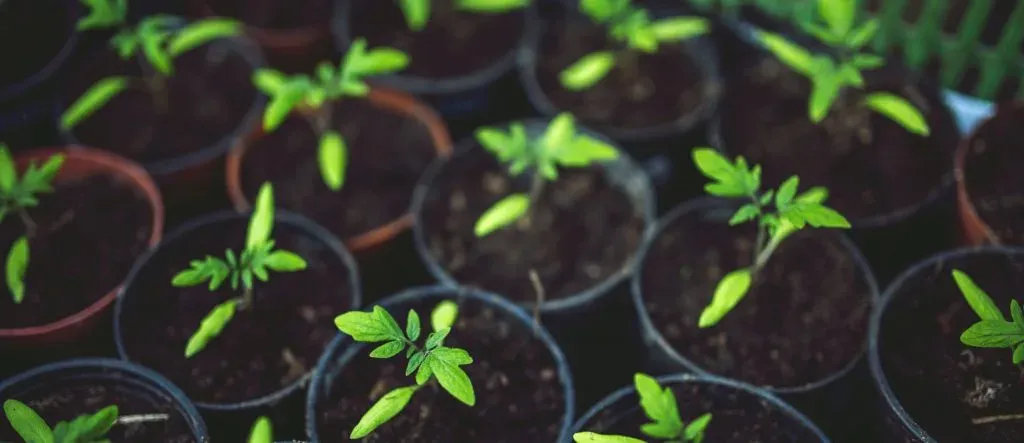A Guide to Effective Germination....
What is Germination?
There are 2 industry-standard ways to produce new plants. Through germinating from seed or by cloning a plant by taking a cutting. Another more high-tech method is tissue culture but this requires high levels of sterility and the correct conditions and media to do so. Germination has always been a key part of propagation and is generally how cultivators produce new plants.
Germination is the basic process of a seed developing into a plant. This only occurs when environmental conditions are favourable. The radicle is the first part of a seedling to emerge. The radicle is the embryonic root of the plant, and grows downward in the soil, this then develops into the taproot and is the initiation point for all other roots that will form during the plant’s lifecycle. At the top of the radicle, the hypocotyl forms and will then push through the media in the opposite direction of gravity to reach a light source. Typically the seed shell would be pushed by the taproot/hypocotyl and the first leaves, known as cotyledon, would begin to open, nudging the seed shell off the plant.
Seeds are amazing dormant little packages of food and genetic material ready to burst into life when certain environmental conditions are correct. In order to get the best results out of your seeds below are some simple hints and tips to help get consistent germination rates.
How to Speed Up Seed Germination...
In order to maximise your chance of sucess when germinating seeds you should have on hand some basic equipment. To achieve the best possible results when growing from seed you will need a propagator and your choice of media to sow the seed into (This could be tissue paper, soil, coco, rockwool cubes or peat plugs / Jiffy pellets).
We suggest that whichever media you decide to sow your seeds into you use a solution of water and a rooting stimulator such as Katana Roots to pre-soak. Once your seeds have sprouted and your first true leaves as opposed to coyledons have emerged we suggest a specific feed tailored for the needs of establishing young plants – Shogun Start is ideal as it contains lower levels of macro nutrients (NPK) than standard feeds but elevated levels of the micronutrients a plant needs to establish.
MOIST, DARK AND WARM.
Certain environmental factors play a huge role in the process of germination. The 3 essentials you need to keep in mind are moisture / humidity, temperature and darkness. When a seed is in dark, warm and wet conditions, it’s outer shell will gently crack and produce a radicle. If the root breaks through and environmental conditions are too dry, the seed will die. To stay healthy and growing a seed needs constant access to water. But there is a fine balancing act as too much water can result in damping off to occur. The critical success factor when germinating from seed is a warm, moist and aerated environment.
In the majority of cases, seeds will germinate better in warmer temperatures and high humidity, which again speaks for the importance of moisture. Moisture and humidity continue to be a key factor when the first true leaves begin to form as younger plants generally respond better to moisture in the air and media. Ideally, 21-22 degrees C is the perfect temperature for germination but any where between 18-24C is the range to aim for, Humidity needs to up to at least 80%, hence the need for a propagator to help maintain this.
Hello darkness my old friend! The abscence of light is a signal to the seed that triggers the plant hormone phytochrome for long enough to establish germination. In the presence of light phytochrome takes on a different form which does not trigger germination in most cases.
PLANTING DEPTH, SEED ORIENTATION.
If you are using the paper tissue method, where you place seeds between wet tissue paper until they germinate rather than directly into media it is thought to be important to plant it right away in your chosen media, and a lot of growers say it is wise to plant it with the root facing down, but this is not strictly necessary as nature always finds a way.
What is necessary is the planting depth, we believe you should plant knuckle deep.
If you are starting from seed and transplanting into a hydroponic system we would advise to start off in coco coir because it offers the least resistance for root growth.
If you choose to use an inert media such as rockwool cubes, it is important to pre-soak it in a weak pH-adjusted nutrient solution, Shogun Start is perfect for this.
SCARIFICATION
This is the technique of weakening a seed so that water and air can enter a lot easier. Doing this will speed up the germination process but care must be taken so as not to damage the embryo of the seed.
A simple method is to use a matchbox lined with sandpaper. Place a square piece inside the bottom of the box and shake well for about 60 seconds. Alternatively place a couple of seeds on a piece of sandpaper and gently rub for 30 seconds. Don't overdo it though!
With some seeds it is easy to see a line around its diameter and sometimes it can be peeled away. This will reveal the naked white seed inside which will germinate faster as it does not have to break through the shell. Pinch the seed, ridge side up, and scrape with a knife to create an opening.
SEED PRIMING
Priming can also speed up the germination. It can also help prevent fungal disease which may already be on the source of the seed. Priming is soaking the seed in a seed soak / nutrient solution for 24 hours then allowing it to dry out completely. It can then be stored in dry conditions until you are ready to plant it. This starts a chain reaction in the seed to start the germination. Once it is primed and dry the process will stop but as soon as the conditions are right the seed is already halfway to germination and the tap root will emerge quicker. A week nutrient solution can also help with this and a common commercial practice to sterilise the seed is with a weak solution of ethanol.



